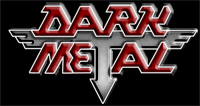The Matrix in Dark Metal canon is an immersive evolution of the internet. It can still be accessed to a limited degree by something akin to web browsers, but the majority of users are expected to be connecting via datajacks - cyberware implanted and connected to the nervous system, such that a user has a direct feed.
Of course, as with all things, how much you're willing to spend makes a difference in your experience. Users without the ability or funds (or desire) to have a datajack installed may use virtual reality gear - anything from bulky headsets and gloves (even outdated keyboards) to much lighter 'trode nets that read electrical impulses from the skin. (Many supernaturals are limited to VR gear or 'trode nets because their physiologies aren't properly compatible or they can't or won't have cyberware installed.) Reaction times are significantly slower, sensory immersion quite limited, and some areas may be completely inaccessible.
Even with datajacks, the experience varies enormously. Depending on the speed of the 'jack and the sophistication of the cyberdeck or other connection being used, the resolution may vary from jerky and grainy up to a quality nearly indistinguishable from reality (although rumors of areas of Matrix that really can be mistaken for reality remain - so far - just rumors). The quality provided by a given section of the Matrix depends in part on the maintainers of that section, and in part on the gear of the user, since many cyberdecks and add-on icon packs can include their own default graphics settings at the whim of their owners (see 'Custom Graphics' below).
Access to the Matrix is common to the point of ubiquitous in Bright areas. Most Bright citizens will either have a home feed or visit cybercafes (and similar establishments). Private feeds become less common in Grey and Dark areas (although theft of service is rampant), but cybercafes do a brisk business. Quality of gear varies with the price required; many Dark cafes don't offer jack connections, or if they do, they're slow and low-quality.
ComSec
The Consortium's answer to MetSec in cyberspace, ComSec (Communications Security) keeps an eye on Matrix activity within its scope, which tends to include all access from Bright sectors and to a lesser degree, Grey ones. A huge percentage of this oversight is automated, with humans intervening only when triggered alarms indicate that sentient response is required, or when the target is particularly valuable. ComSec also acts to shut down Matrix locations providing information which the Consortium deems a threat (and is empowered to do so unilaterally). This can range from anti-Consortium propaganda to piracy sites, but typically they have more than they can handle in this area.
Personal Matrix Space
'Ownership' of Matrix space is much like possession of a website. It may be created by the ower or by a hired professional, it may be hosted on the user's own cyberdeck (in which case access to it depends on their current connection status) or on a more permanent location. Private Matrix playgrounds within the security of a personal cyberdeck are quite common, with the standard variation in quality. (Sex in cyberspace, while it can't be mistaken for the real thing, is still a thriving business in LATMA.) Some providers (notable among them, the Technophile) may host vetted creations of their customers as art pieces.
Custom Graphics
The use of customized graphics packs can speed up experiences, but does so by replacing (for that user) whatever environment that Matrix area typically provides - what that user sees may vary enormously from what a typical visitor sees. For example, a standard user browsing in LATMA Commons (one of the common starting zones for logged-in users) will see a highly stylized cityscape in which links are simple focus points and other users have their own personal icons to represent themselves. One who's had a Jurassic graphics pack installed might instead see a vast wilderness landscape complete with random dinosaurian icons in place of other users. The functionality remains completely the same and accessible, but the user is familiar with the way their personal graphics represent users, links, and other such things, rather than needing to adapt to the schema in use for any given Matrix location. This can speed up their navigation and be amusing, but can also make it difficult to communicate with others seeing the defaults. (Typically the graphics pack can be toggled on and off at whim.)
Hacking the Matrix
Hacking is alive and well in LATMA, and while its appearance has changed somewhat, at core it is really much the same - determine a weakness, attack the weakness. The difference lies in the access modern hackers have to sophisticated graphical tools, allowing them to react instinctively to actions by their targets. (Some, of course, rely on time-tested, text-based methods - they're all the same at the root.) Dark Metal primarily relies on the Shadowrun 3E rules for the common Matrix, but players are welcome to choose their own system within their troupes.
